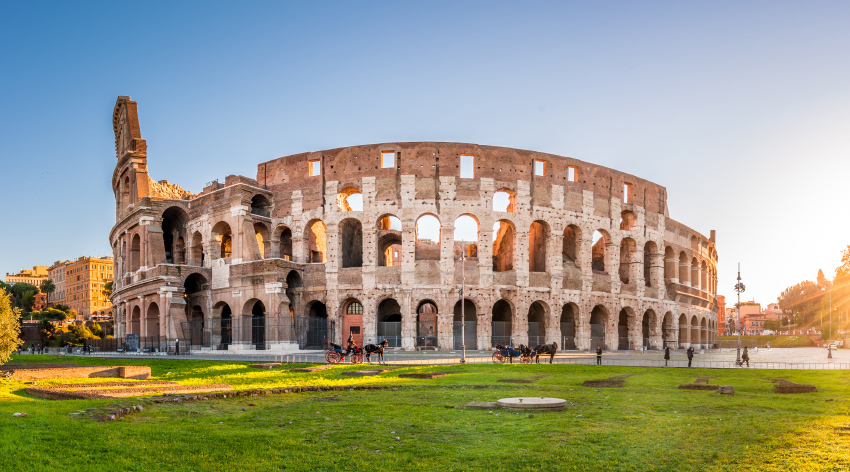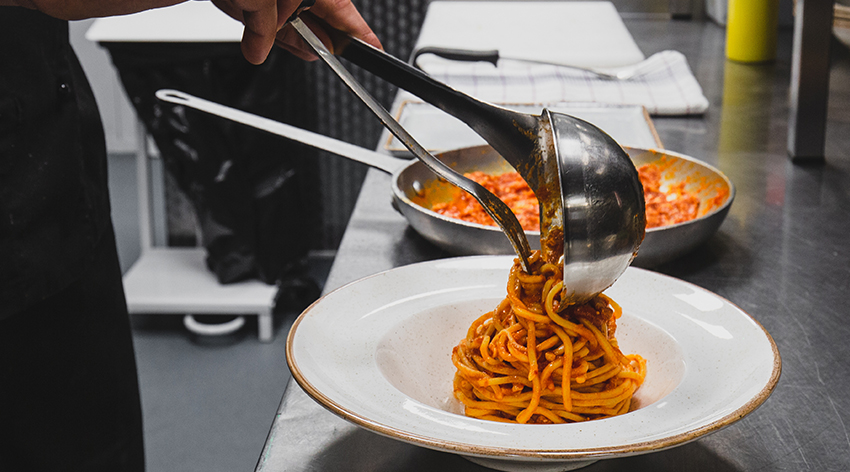
Lazio (laat·see·ow) is the Italian region that is home to Rome– the city famous for iconic sites like the Colosseum, the Trevi Fountain, the Forum and Pantheon, the must-take-a-selfie-here Spanish Steps and, of course, nearby city-within-a-city Vatican City–capital of the Roman Catholic Church.
Certain cliched phrases have been around forever and highlight the culturally iconic status of Rome:
Not to mention the fame and glory of Ancient Rome, and its lasting influence to this day.

And the food? Spettacolare!
One of the May traditions in and around Rome is to take the day and visit the countryside to eat fresh, green fava beans with shavings of the region’s famous sheep’s-milk cheese– Pecorino Romano. Tiny fragolina strawberries are to be had only in mid-spring, enjoyed with a mascarpone cream or with a little sugar and fresh lemon juice. Food is so central to Roman culture that even the days of the week are tied to certain foods, as evidenced by the Roman saying, “Giovedì gnocchi, Venerdì ceci e baccalà, Sabato trippa…” which translates as, “On Thursday, you eat gnocchi (probably gnocchi “alla romana,” which is made with semolina flour); on Friday, pasta with chickpeas and a piece of baccalà (salt cod that Romans often bake with tomatoes and olives); Saturday is for tripe (something most Americans have yet to embrace).
Roman pizza comes in two main varieties: Pizza al taglio, or pizza by the slice, often cut with scissors and always rectangular, and Pizza Romana, which is a whole pie with a thin crust. It’s sometimes called pizza bassa (low pizza) to differentiate it from the Neopolitan style of pizza alta (high pizza). Roman pizza often has oil added to the dough which makes for a crispy crust. When in Rome you can describe the crunchy texture like the Romans do as “scrocchiarella.”

Romans love spaghetti—it’s the typical pasta used with the “Famous Four” Roman pasta dishes– Cacio e Pepe, Gricia, Carbonara, and Amatriciana. These dishes are closely related, with only a key ingredient or two differing. All share the same Pecorino Romano sheep’s milk cheese, which is essential because when used with water retained from the pasta pot, it melts and creates a smooth (and tasty!) emulsion with the pasta. It may be surprising that Italians prefer to buy their spaghetti and most other pastas dried from the store. The homemade variety was historically considered a poor alternative to the quality store-bought pastas widely available.
It is true that Rome wasn’t built in a day. And should you be visiting, don’t try to see all of Rome in a day, either. The city and the Lazio region offers an abundance of wonders to discover, and a world of food flavors to try, embrace, and recreate back at home with genuine Italian ingredients for authentic Italian cooking.